Thanks to the Internet, studying history has become much easier and much more interesting! In a school presentation, this science looks continuous a jumble of numbers and a description of the wars fought by various empires for world domination, but if you approach the study of history as a hobby, you can just get great pleasure. 
1 Slug Soup 
In the 14th century, during the reign of King Philip VI, he lived in French doctor named Guido da Vigevano. He is credited with discovering ingenious antidote for aconite poisoning. Aconite (wrestler, shooting grass) - a poisonous perennial, contains toxins that affect heart, muscles, central nervous system. Muslims used poison this plant against the crusaders. So how did a 14th-century physician come up with antidote for aconite poisoning? He noticed slugs greedily eating leaves of a plant, and it dawned on him that if these creatures could bear toxin, then perhaps they can be used as a medicine. He collected bunch of slugs and boiled them. First tested the resulting mixture on animals, and then tried it on myself. He was obviously a very brave man, because for the sake of the experiment, he had to first poison himself with aconite, and then eat creepy slug soup. The test was not easy, vomited three times, but then it got better again. That's how the big ones do it discoveries.
2. Shadows of the dead from the nuclear bombing 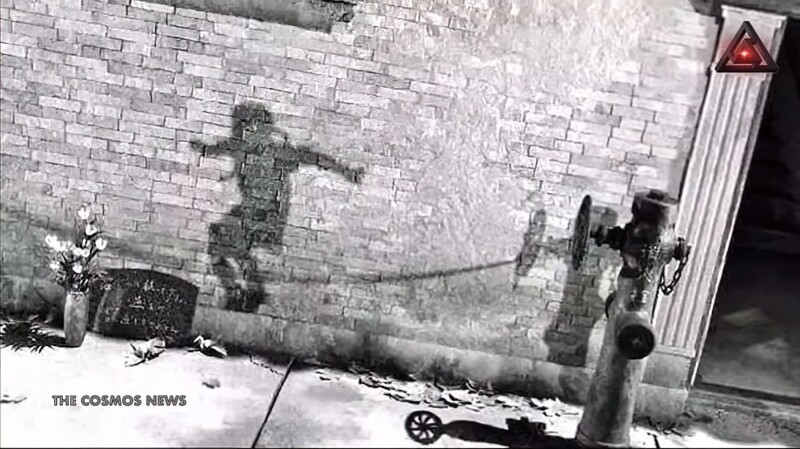
After the atomic attacks of World War II on the two largest cities of Japan, Hiroshima and Nagasaki, in 1945 the survivors were shocked, seeing the "shadows" of objects such as bicycles and cars on the sidewalks and buildings, but worst of all were the shadows of people. It became clear that they look at the last millisecond of a person's life. Turns out it's more photos than shadows. According to Dr. Michael Hartshorne of the Medical school of the University of New Mexico, when the atomic bomb was detonated, it was extremely intense light and heat radiate out in all directions from the area explosion. Thus, any object in the direct path of this energy shields the area behind itself, leaving it dark, while the area around the object is subjected to the strongest impact and discolored by a huge amount of energy. In this sense, atomic the bomb looks like a really sinister giant camera that kills all objects in its path and taking pictures of them at the same time.
3. Animal trial 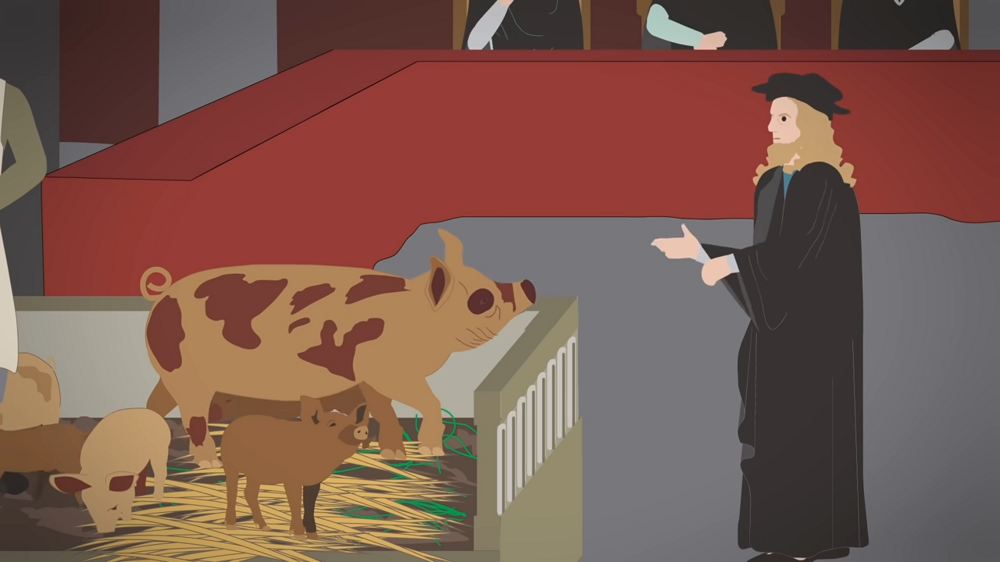
For centuries in Europe, in countries such as Switzerland, France, Italy, practiced animal trials for crimes committed by them against God, people and someone else's property. The defendants could be, for example, pigs. Or rats grasshoppers and even snails. These trials were held in two variants: secular, when a lawsuit was filed against an animal or group animals that attacked someone, or church animals when served lawsuits against pests such as locusts or rats that have been excommunicated by the church for stealing grain. Here is a good example of animal trial from the 15th century: in the Parisian suburb of Savigny, in December 1457, a sow with six piglets went mad, attacked and killed a five-year-old boy. Seven pigs were caught red-handed while committing cruel crimes, cleverly seized, thrown into a corral and put on trial. sow sentenced to death. The piglets were covered in blood, but they were all acquitted because it was impossible to prove that they were involved in attack.
4. Pharaoh Pepi II 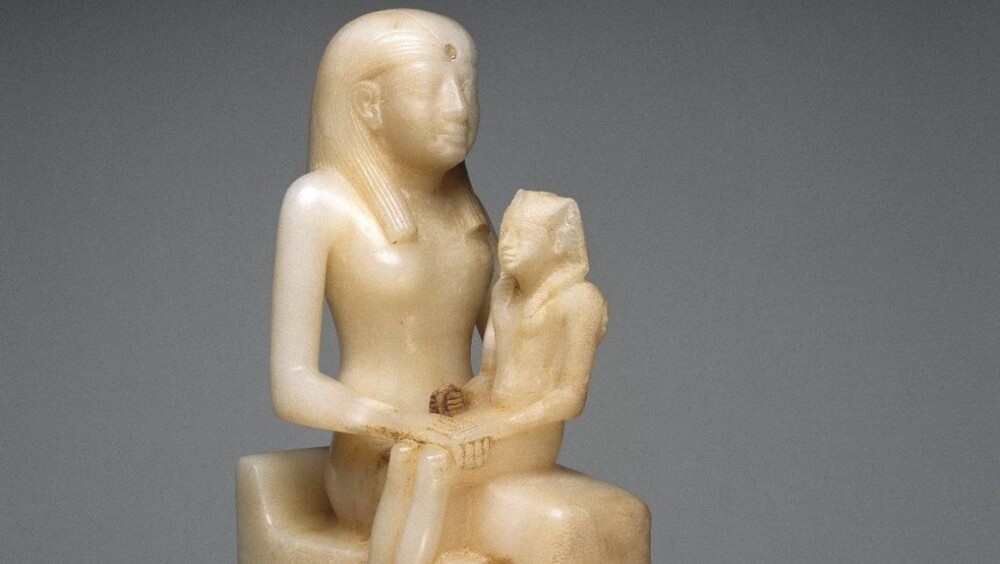
Pharaoh Pepi II Neferkare, Egyptian pharaoh of the Sixth Dynasty in the Old Kingdom, was enthroned at the tender age of six in 2278 BC and his mother was his guardian. Later, when Peopi grew up, he turned into a rather strange character. Preserved information about his crazy behavior and stupid antics. For example, he forced his slaves to pour honey on them so that all the flies land on them, and did not fly to him. Absurd. The fly in ancient Egypt became in the end revered symbol of perseverance and perseverance, and golden flies began to reward soldiers who especially distinguished themselves in battle. The golden fly may be the first "medal of honor" in history. Or another story: it was found a letter that he wrote to the ruler of Aswan Harkhuf, who headed expedition to Nubia. The letter contained a request to "immediately seize dancing pygmies and deliver to the court for amusement. In general, Piopi II is considered the mostlongest reigning pharaoh in history: one sources, he lived to be 100 years old and ruled for 94 years, according to others board was 64 years.
5 Syphilitic Zombies 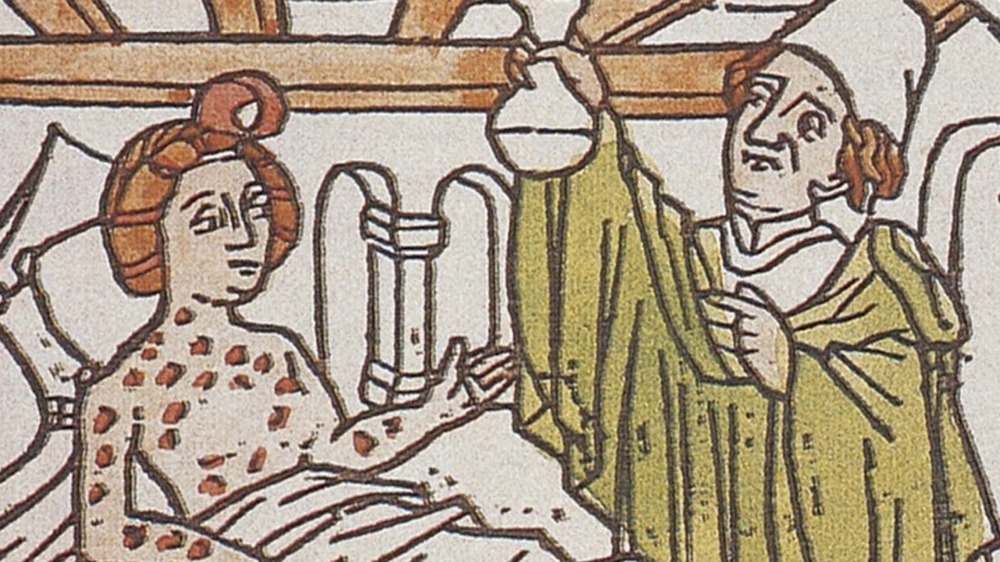
There are two theories about the origin of syphilis. One called the Colombian theory and suggests that the disease was brought to Europe by the people of Christopher Columbus in 1493. Other - pre-Columbian theory based on ancient Greek sources with vague references to some of the symptoms of syphilis. About the first in Europe an outbreak was reported by French troops after the encirclement of Naples in 1806. Syphilis can so corrode the flesh that it literally fall off your face. It also decomposes body parts, causing disfigurement and excruciating pain. These sick poor fellows walked through the city streets, as if syphilitic zombies, leaving behind a trail of bits of their flesh. Since they were undoubtedly in such great agony, they, probably looked or walked about the same as zombies in modern horror films.
6. The story of Minnie Dean 
Sometime in 1890, the Invercargill Township Police in New Zeeland suspected a lady named Minnie Dean who was a local "baby farmer" - that was the name of the adoptive parents. She advertised in newspapers, actively looking for little orphans and adopting them. children on her care became more and more, and information was discovered that she tries to insure their lives. The cops were wary, and for good reason. Rumors soon spread that the babies were disappearing somewhere. In 1989 a six-month-old baby disappeared, and two years later - a newborn girl who is 6 weeks old. The police began to keep a close eye on for Minnie Dean. In 1895, they finally had real evidence. 2 May the reporter saw her getting on the train with a hatbox and child. When she returned, she had only a hatbox in her hands, and there was no baby, and the hatbox seemed much heavier than it should be. Minnie Dean later justified herself by claiming the child was a mysterious died in the night, and in a panic she stuffed him into a hatbox, to get off the train without problems and get home. The reporter called police and eventually found the body of a dead girl in Minnie Dean's garden, buried next to the bodies of two other children. Minnie Dean tried and sentenced to hang. The execution took place on August 12, 1895.
7. Cruentation 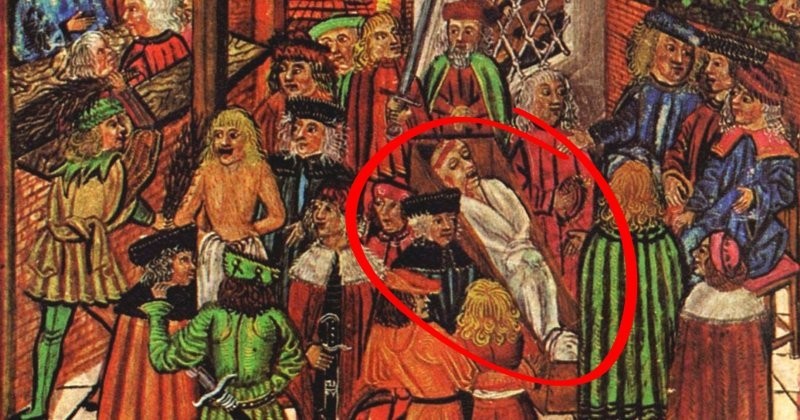
In the Middle Ages, an interesting method of searching was common evidence against the suspected killer, who was called cruentation. When the killer approached the body of the victim, it start bleeding spontaneously. In more complex cases, jurors determined guilt or innocence through trial. For this, the suspect was brought to the victim and forced to lay hands on on a corpse. The accused was convicted if any wounds on the body began to bleed or something else strange happened. This was instantly proclaimed by God's verdict (judicium Dei), proving guilt. Ironically, this method could actually sometimes work - due to severe psychological stress, which the killer was subjected to when he was forced to look into dead eyes and touch the cold corpse of the victim. The killer could lose his temper and to confess his atrocity right there, on the spot.
8. Posthumous photograph 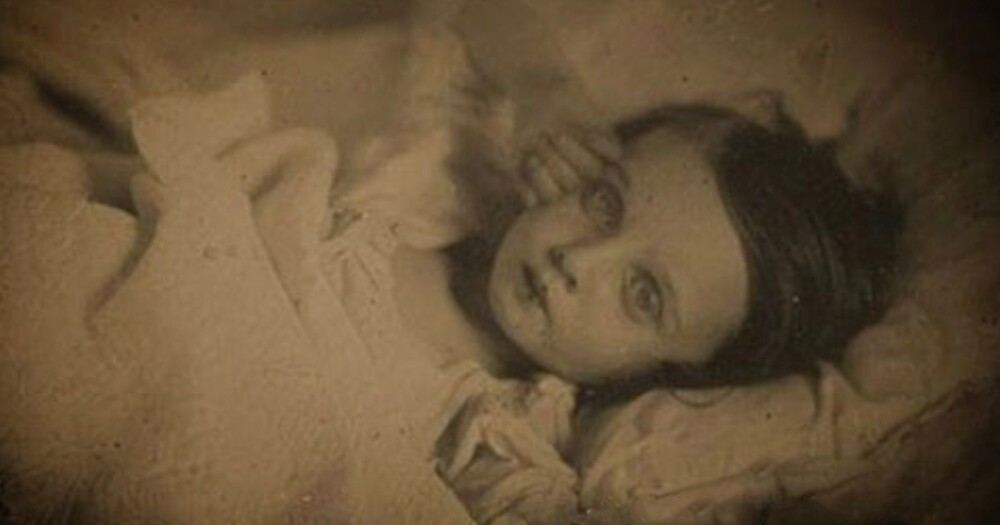
Life in Victorian times was hard, with high mortality, especially in children. Great Britain was swept by a wave of such epidemics like cholera, typhoid and diphtheria, and in 1861 the grieving queen brought mourning into fashion. And grieving parents brought into fashion posthumous photographs, trying to keep at least something from the timelessly departed child. Photography was still in its infancy at the time. it was quite difficult to take a picture - a long exposure time, which is why living objects were often blurry. With the dead it was in this sense easier. The mourners also kept strands of the deceased's hair as a memento, to wear them in rings or medallions. They also made posthumous wax masks, and artists created many works, depicting symbols and scenes of death. Popularity of posthumous portraits continued to grow and photographers of this genre have always had a guaranteed Job. Death was just in the air.
9Mummy Unwrapping Parties 
In the 18th and 19th centuries, Europeans were terribly fascinated by the AncientEgypt, the afterlife and everything to do with mummies. Charm was so strong that it was called Egyptomania. Enthusiasm mummies dates back to the 15th century, when traders began shipping mummies from Egypt to Europe. It was believed that they can be made very effective cures for every disease in the world. Demand for mummies hits record high high level in the 19th century, due in part to the success of the Egyptian and Syrian campaigns of Napoleon. This caused a huge upsurge of interest in all kinds of antiquities. Of course, this was not purely scientific interest; it was more similar to "Let's have a mummy unwrapping party!" These Victorian-style parties looked something like this: invitations, people got together on the appointed day, drank and ate, and then unfolded the mummy and listened to a lecture by some historian-Egyptologist. He came up with such meetings and brought into fashion an outstanding English surgeon Thomas Pettigrew. It was creepy, but very Interesting.
10. Gibbeting, or hanging in a cage 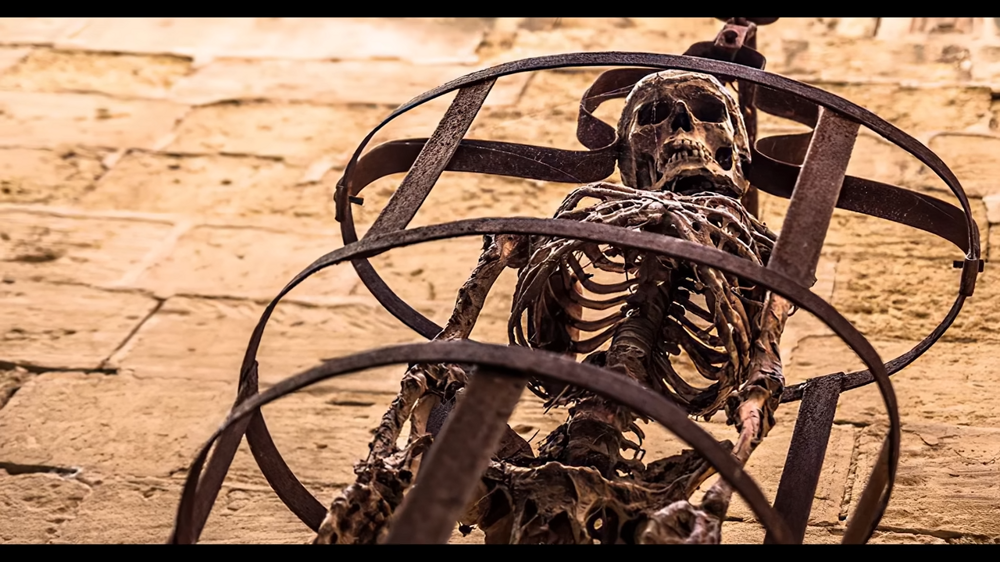
Throughout human history, convicts criminals were subjected to cruel and bloody punishments. One of the most terrible executions was the hanging of a living criminal in a cage. The criminal died long and painfully, from hunger and thirst, in front of all honest people. The brutal practice of gibbeting was very popular and gathered tens of thousands of onlookers. The main thing was not to live next to that a place where cages with living corpses are hung.
Add your comment
You might be interested in:





















